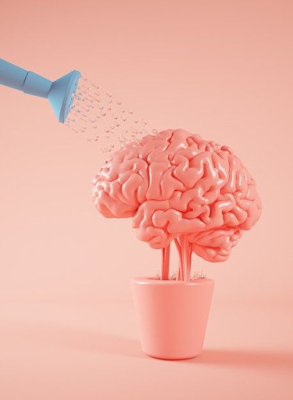In the realm of neuroscience and cognitive science, there is a fascinating concept known as neuroplasticity – the brain's remarkable ability to adapt and reorganize itself in response to learning and experience. This phenomenon has opened up exciting possibilities for cognitive training, a field dedicated to enhancing cognitive abilities through structured exercises and activities. In this article, we will delve into the intricate relationship between neuroplasticity and cognitive training, exploring how brain training can influence both the structure and function of the human brain.
The Wonders of Neuroplasticity
Neuroplasticity, often referred to as brain plasticity, is the brain's ability to change and adapt throughout a person's life. It challenges the long-held belief that the brain's structure and function are relatively fixed after a certain age. Instead, research has shown that the brain remains flexible and capable of rewiring itself in response to various stimuli and experiences.
There are two primary forms of neuroplasticity:
1. Structural Plasticity
Structural plasticity involves physical changes in the brain's structure. This can include the formation of new neural connections (synaptogenesis), the pruning of unused connections (synaptic pruning), and even the generation of new neurons (neurogenesis) in certain brain regions, such as the hippocampus.
2. Functional Plasticity
Functional plasticity relates to the brain's ability to redistribute functions from damaged to undamaged areas. For example, if a particular brain region is injured, the surrounding areas may compensate for its functions, allowing individuals to recover some lost abilities.
Cognitive Training and Brain Plasticity
The intersection of neuroplasticity and cognitive training is a subject of immense interest and research. Cognitive training encompasses a variety of exercises, games, and tasks designed to enhance cognitive functions such as memory, attention, problem-solving, and language skills. The fundamental idea is that consistent and targeted cognitive training can stimulate neuroplasticity, leading to improvements in brain structure and function.
Benefits of Cognitive Training
1. Memory Enhancement
Cognitive training exercises focused on memory can lead to improvements in both short-term and long-term memory. This is particularly beneficial for individuals dealing with age-related memory decline or conditions like Alzheimer's disease.
2. Attention and Focus
Training that hones attention and focus can enhance an individual's ability to concentrate on tasks and maintain mental clarity. This is valuable for improving productivity and overall cognitive performance.
3. Problem-Solving Skills
Cognitive training often involves puzzles and problem-solving activities. These exercises can boost an individual's problem-solving abilities, critical thinking, and creativity.
4. Language Proficiency
For individuals looking to improve language skills, cognitive training can enhance vocabulary, comprehension, and language processing.
Neuroimaging and Cognitive Training
Advanced neuroimaging techniques, such as functional magnetic resonance imaging (fMRI) and positron emission tomography (PET), have allowed researchers to explore the structural and functional changes that occur in the brain as a result of cognitive training.
These studies have revealed that cognitive training can lead to:
Increased Gray Matter Density: Some forms of cognitive training have been associated with increased gray matter density in specific brain regions, suggesting structural changes related to learning and adaptation.
Enhanced Connectivity: Cognitive training can improve the connectivity between different brain regions, facilitating more efficient information processing.
Practical Implications and Future Directions
The exploration of neuroplasticity and cognitive training holds immense promise for various applications:
Aging Population: Cognitive training can provide elderly individuals with tools to maintain cognitive vitality and potentially delay cognitive decline.
Education: Cognitive training can be integrated into educational curricula to enhance learning outcomes and student performance.
Neurorehabilitation: Individuals recovering from brain injuries or neurological conditions can benefit from targeted cognitive training programs to aid in their rehabilitation.
While the field of cognitive training and neuroplasticity is still evolving, it is clear that the human brain retains its capacity for adaptation and growth throughout life. As researchers continue to unravel the complexities of this relationship, we can expect to see increasingly effective cognitive training programs designed to harness the power of neuroplasticity for enhanced cognitive function.


No comments:
Post a Comment